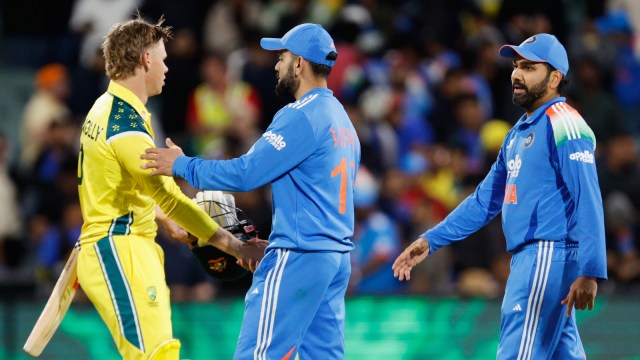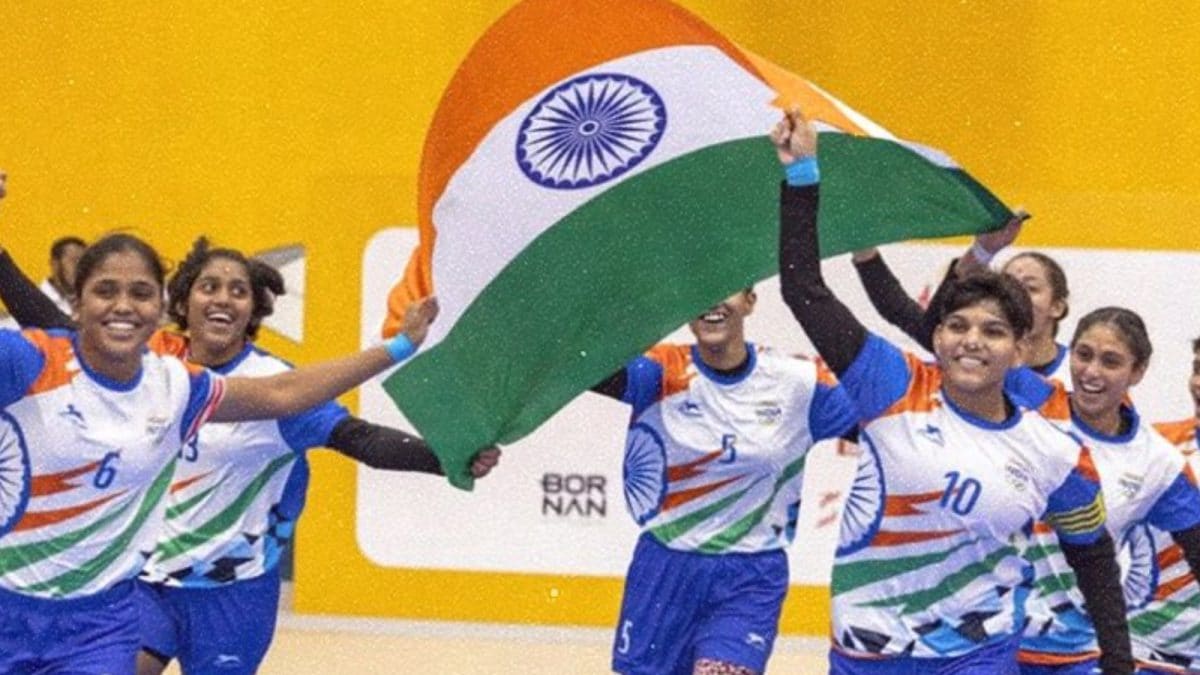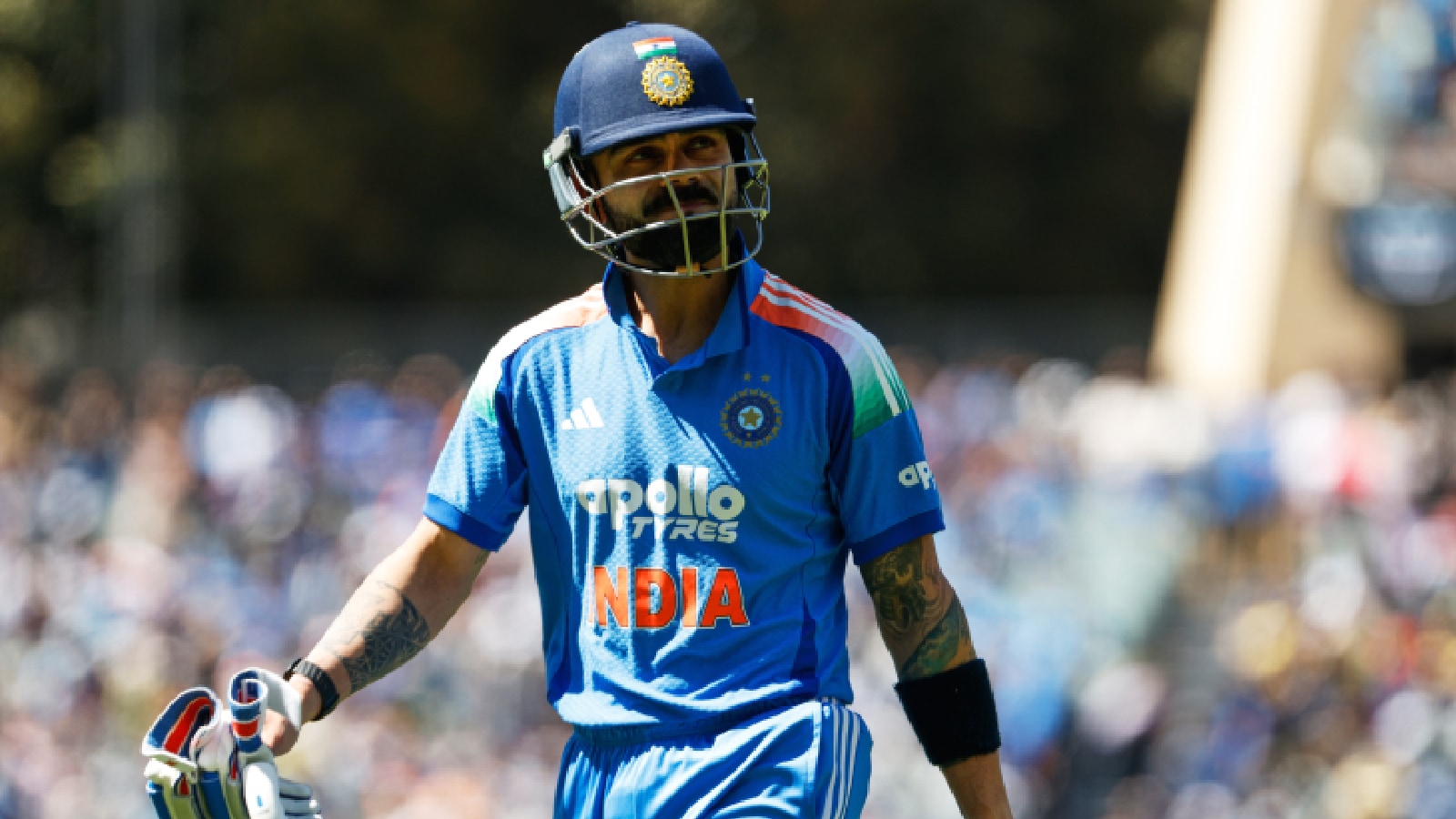ARTICLE AD BOX
 Australia beat India by two wickets in Adelaide to take an unassasible 2-0 lead in the ODI series. (PHOTO: AP)
Australia beat India by two wickets in Adelaide to take an unassasible 2-0 lead in the ODI series. (PHOTO: AP)
Two late Australian wickets injected a false sense of drama; of India pulling off an unseemly heist. But the icy veins of Cooper Connolly did not burst as the left-handed batsman steered Australia past the target of 265 to secure a series win. The margin of defeat–by two wickets–would offer only a fleeting consolation of what could have been. Realistically, the visitors were playing catch up throughout the game. The start with the bat was sedate, the end was a limp too; the middle overs with the ball was a directionless meander, lacking magic and purpose. The late, funnily late, fightback couldn’t conceal the shudderingly defensive mindset. In the end, it cost India the series more than inexperience, or acclimatisation.
Maybe, everything would change when Jasprit Bumrah and Hardik Pandya return. Pandya would infuse the lower middle order with ammo and render balance; Bumrah would instil fear and cutting edge. But world-conquering ambitions can’t be nailed on two match-winners with dodgy fitness records and ageing bodies. Both would be 33 when the next World Cup kicks. Mohammed Shami’s return looks bleaker by the day. Suddenly India’s alternatives look thin; their choices poor; and the bowling firm impotent. The bowling permutation for both games originated from confused pragmatism with too many restrictive entities.
The threats of India’s bowling began and ended with Arshdeep Singh and Mohammed Siraj. Once their wits were nullified, Australia’s batters could pound runs of Harshit Rana and Nitish Kumar Reddy. Both tangoed to leak 83 runs in 11 overs. Rana produced the odd wicket, in the bargain of offering one too many boundary balls. For instance, he broke the match-defining stand between Matthew Short and Connolly, who retrieved Australia from a wobbly 132 for 4 to 187 for 4. But in Rana’s next over, Mitchell Owen pasted him for 14 runs. His two-over burst for 26 runs would hand Australia the ascendancy at a time when the required run-rate was almost run-a-ball. The Rana leap of faith does not look like producing immediate results, certainly not at this developmental phase of his journey. Whether affected by outside chatter, he seems a few domestic seasons away from becoming ready for international rigours.
Maybe, it was already too late. The moment where India could have killed Australia was when they lost Alex Carey, bowled by Washington Sundar. The lower-order was raw, between 6, 7 and 8, they had a collective experience of 14 games. Owen, who smeared a 23-ball 36 and in his second international game, had never batted at this level. Here, India decided to suffocate them with the spin-pivot of Washington and Axar Patel, rather than attack and crush them. Both kept a firm lid on the runs. The next four overs bled 13 runs, but at best competitive target meant that Australia could bide time and turn on the afterburners when set. So they did. In a similar juncture in the past, India would have dialled a Bumrah or Siraj or Kuldeep Yadav to produce more shove Australia further back.
Baffling, with every wicket-less over, was the exclusion of Kuldeep, a certified wicket-taker on any surface, arguably India’s most potent bowler in the squad. He could have relished the extra bounce and drift the cross-wind in Adelaide aids. Moreover, most of Australia’s batsmen have not faced him. His benching reeked of an outrightly defensive mindset. Washington and Axar provide batting depth and economy, but neither have that gift of producing a wicket from thin air. Rarely do they bowl a bad ball, but enterprising batsmen, like Owen and Connolly, could manufacture boundaries. Connolly latched onto Axar in the 32nd over, looting 10 runs, and Washington in the 33rd. These little momentum-swings turned costly at the end. The pair kept the required run-rate under control with nudges, singles and glides that yielded singles and twos.
 India are playing three all-rounders in the Australia series and it hasn’t worked in their way until now. (PHOTO: AP)
India are playing three all-rounders in the Australia series and it hasn’t worked in their way until now. (PHOTO: AP)
As influential as all-round depth is in the modern game, great sides are those that have struck the balance between genuinely attacking nucleus and the depth-providing all-round stock. The title-winning Australia of 1999 and 2003 largely employed five bowlers (four specialists and an all-rounder). In 2007, without Shane Warne, Brett Lee and Jason Gillespie, they eked out considerable overs from Michael Clarke and Andrew Symonds on the slugging tracks of the Caribbean. Even though India had ample part-timers in the 2011 World Cup, the bowling nucleus comprised the specialists (Zaheer Khan, Ashish Nehra until he got injured, Munaf Patel, Harbhajan Singh and Yuvraj Singh, a proper all-rounder in the tournament).
Little doubt that India have genuine all-round depth, but they are too one-dimensional that they cannot make them the next Invincibles. Axar and Washington are solid, tidy bowlers who could ace the support role but would struggle as lead acts. Nitish Kumar is too callow in this format and rarely bowls (14 wickets in 23 List A games). In short, three all-rounders is a crowd, especially if the third is unproven and playing his debut series. India’s blueprint for the 2023 World Cup was perfect (four specialists and two genuine all-rounders). Maybe, if Pandya were fit and Jadeja not omitted, India’s team management would have had the confidence to draft Kuldeep.
Story continues below this ad
It’s a transitioning group, the team management could argue. But India lost the whistlestop series not only due to rawness or rustiness but also because they were not brave enough, not attacking enough.










 English (US) ·
English (US) ·